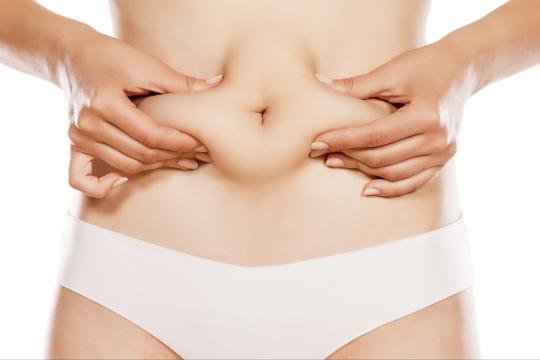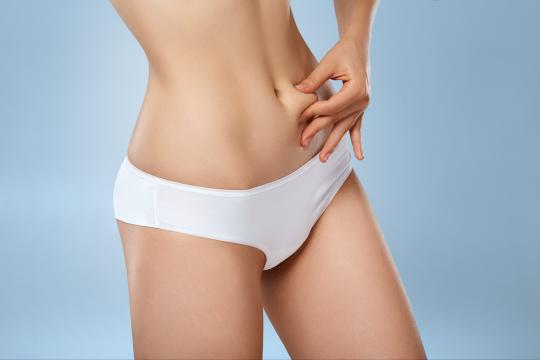
If we learned anything from Goldilocks, it’s that no chair, porridge or bed can be all things to all people. Most things can’t. That includes plastic surgery. It’s an odd transition, but it’s true. Whether you're considering a breast augmentation, a facelift or a hair transplant, your procedure must be specifically focused to meet your own individual physiology, history, goal and temperment. Which means that today’s plastic surgeons must have a wide variety of techniques and tweaks to cater to the things that make us all so unique. In today's post we're going to deep dive into one surgical procedure specifically and the variations your surgeon might use to get you to the best possible result. The tummy tuck—what it is, what techniques are used, what are its limitations and which one might be right for you. Let’s go.
What is a tummy tuck?
First things first, the technical term for a tummy tuck is an abdominoplasty. An abdominoplasty is a plastic surgery procedure that removes excess abdominal fat and loose skin while tightening stretched out muscles in the abdominal wall. This procedure is often considered after pregnancy or after a patient has lost a considerable amount of weight. It can eliminate or greatly reduce the appearance of stretch marks from the lower abdomen. If weakened muscles are impairing the contour of your body and contributing to a flabby ab area, and your looking for a surgical fix, a tummy tuck might be the answer. Bonus: If your belly button is misshapen and sagging down to your nether regions, a tummy tuck can often resize and rejuvenate that as well.
Which tummy tuck is right for you?
Your plastic surgeon will assess a number of factors when deciding how best to address your individual body—your anatomy, the quality of your abdominal muscles and laxity of your skin, your obstetric (weight/gain) history, and the amount of recovery time you can afford to take. You’ll also need to be upfront about the usual suspects when it comes to a surgical procedure—do you smoke, do you have diabetes or another medical condition that may affect your blood flow, your lifestyle, etc…
- The mini-tummy-tuck is typically reserved for patients who’ve always been in fairly good shape but can’t quite reach their ab goals through diet and exercise alone. It has a smaller incision than other tummy tuck procedures, slightly longer than a C-section scar, and in most cases the belly-button is “floated” instead of reshaped/resized in order to eliminate additional scarring. The ideal candidate for this procedure is one where any loose muscle or excess skin is locate below the belly-button, as it’s more difficult with this technique to address the upper abdomen should that also require extensive tightening. Your surgeon may also advise liposuction in addition to a mini-tummy tuck to further define the area.
- The standard version of the tummy tuck is for the surgeon to make an incision from one side of the abdomen to the other (think to the love handles and you’ll be somewhere in the vicinity) in order to addresses the entire front of the abdomen, excess tissue removal, muscle tightening and resizing the belly-button. Your surgeon may also advise the use of liposuction to remove excess fat and contour the abdomen.
- A high lateral tension abdominoplasty is an extended version of a tummy tuck. This is generally reserved for patients who also need to address side (love handle) and back rolls of excess fat. The incision for this procedure is longer than a standard tummy tuck, as it extends to include a lift to the hip and thigh area. In cases where a patient has lost a massive amount of weight (and kudos, btw.) your surgeon may advise a circumferential excision combining an extended tummy tuck and buttock lift procedure or a lower body lift. They may also suggest liposuction to provide additional contouring.
What’s with all this talk of liposuction?
If you’re considering a tummy tuck your surgeon may discuss considering liposuction as well. Many doctors recommend adding a component of liposuction to surgical procedures, and it’s not the hard-sell it might seem. While not always necessary, a liposuction procedure in tandem with your tummy tuck (and many other surgeries—neck, breast, arm and body lift) can be beneficial as it can provide additional shaping and contouring to give you the best result. And isn’t that why you’re there?
Limitations of a tummy tuck.
Despite the wonders of modern medicine, a tummy tuck is not magic. It can’t address fat lying inside the abdomen or around the internal organs, so if you thought that post-tummy tuck you could officially resign from a healthy diet and exercise… just no. You can’t. And like all surgical procedures you’ll need to be aware of the potential side effects and risks. There will likely be bruising, swelling and scarring, as well as the slight risk of developing hematoma (accumulation of blood) and seroma (accumulation of clear fluids), infection and any issues with healing. You’ll also have to do your part, following each and everything that your surgeon advises pre- and post-surgery. Your surgeon will discuss all of the possible side effects and risks with you prior to your procedure.
As always, everything we’ve spouted about today requires that you’re considering a tummy tuck under the advisement of a board-certified plastic surgeon who works with an accredited surgical facility with board-certified anesthesiologists who will ensure that whatever procedure you have done is done safely and successfully.




